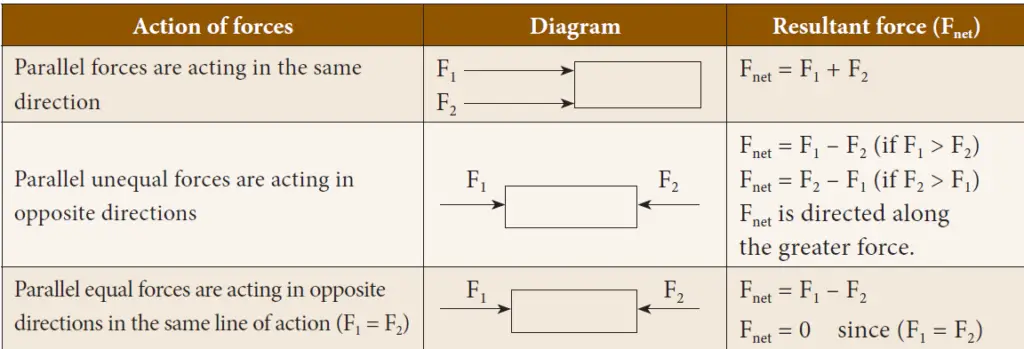Resultant Force
When several forces act simultaneously on the same body, then the combined effect of the multiple forces can be represented by a single force, which is termed as ‘resultant force’. It is equal to the vector sum (adding the magnitude of the forces with their direction) of all the forces.
If the resultant force of all the forces acting on a body is equal to zero, then the body will be in equilibrium. Such forces are called balanced forces.
If the resultant force is not equal to zero, then it causes the motion of the body due to unbalanced forces.
Examples: Drawing water from a well, force applied with a crowbar, forces on a weight balance, etc.
A system can be brought to equilibrium by applying another force, which is equal to the resultant force in magnitude, but opposite indirection. Such force is called an ‘Equilibrant’.
Resultant Force of parallel forces (3 different cases as examples)

The resultant force of parallel forces acting in the same direction – If 2 forces F1 and F2 are parallel to each other and they act in the same direction, then Resultant Force Fnet=F1 + F2
If 2 forces F1 and F2 are parallel to each other and they act in the opposite direction, then Resultant Force Fnet=|F1 – F2|
In other words,
Fnet = F1 – F2 (if F1>F2)
Fnet = F2 – F1 (if F2>F1)
And, the direction of Fnet would be along the greater force.
If 2 parallel equal forces act in the opposite direction in the same line of action then Fnet = F1 – F2 = 0
=> Fnet = 0
Know more about Resultant of 2 Vectors here: resultant vector

